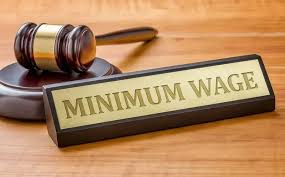The minimum wages act, 1948, is the minimum amount that an organisation has to pay a particular employee (skilled or unskilled) for a specific job at a particular time that any contract agreement or collective agreement cannot reduce. The Minimum Wage Act was first implemented in 1948 and took effect on 15 March. The Act also created the Tripartite Committee of Fair Wage. This committee was formed to set the minimum wage guidelines in India. It defined the minimum wage and the criteria for its calculation. It set the foundation for the wage fixation process in India.

Minimum Wages Act
Minimum Wages Act is Central legislation that is administered by both the Central and State Government. The State Government is responsible for fixing minimum rates of wages for different classes of employees, make rules, appoint inspectors and an authority to decide claims relating to non-payment of minimum wages. Every State fixes the minimum wages which are also revisable for every five years
Purpose of Minimum Wage Act, 1948
The importance of the Minimum wage act 1948 is to prevent employee exploitation and ensure a decent living for a worker. The Act provides that the government will fix the minimum wage rate and revise it every five years. It appoints advisory committees to consider the proposals. The government must follow the guidelines and implement them as soon as possible. In many cases, this means announcing the changes to the law before the public.
- The Act was introduced in 1948, and it was amended in 2000
- The changes included a change in the floor level for minimum wages
- Currently, the minimum wage floor in India is 115, but the law also gives exceptions for certain employees
- The lowest floors are in Andhra Pradesh, Kerala, and Gujarat
- In addition to this, the new law provides for higher minimum wages for workers with disabilities
The act requires the government to consult with the committee and the representatives of the people affected by the minimum wage.
- The committee determines the minimum rate of the act
- The government must publish it in the official newspapers and enforce it within three months
- The government must inform the affected parties of the proposed minimum wage by publishing the decision in a national daily
- In case of non-payment of wages, the authority must pay ten times the difference
Fixation and Revision of Minimum rates
The Minimum Wages Act, 1948, for the most part, indicates the lowest pay permitted by law rates on an everyday basis and stretches out to the whole nation. It is overhauled every five years, but there is an arrangement to increment the dearness allowance every two years. ILC first suggested the standards for fixing and amending minimum wages.
Update of the lowest pay permitted by law rates depends on a ‘typical cost for many everyday items list’, and wages can be fixed for a whole state, some portion of the state, class or classes, and occupations relating to these classifications. The obsession with wages depends on the standards referenced and a compensation board (different for various industries).
Under the Minimum Wages Act, State and Central Governments can fix and reexamine the least wages.
- The demonstration determines that the “suitable” government ought to improve the wages; for example, if the wages to be fixed are according to any power of the Central Government or Railway organisation, then the Central government fixes it
- Assuming that the compensation rate is to be fixed or amended for planned work, the separate state legislatures set it
- The Centre fixes the National floor level Minimum Wage that is lower than most states’ individual least wages
- The vagueness and cross-over in the locale of government levels have caused discussions and contentions
- One of such discussions spins around fixing wage paces of MGNREGA plot and a business ensure drive by the Central Government
The Objective of the Minimum Wages Act
The Minimum wage Act 1948 accommodates fixing wage rates (time, piece, ensured time, additional time) for any industry.
1) While fixing hours for an ordinary working day according to the demonstration, ought to ensure the accompanying:
- The number of hours to be fixed for an ordinary working day should have at least one stretch/break
- One three-day weekend from a whole week ought to be given to the representative for rest
- Installation for the day chosen to be given for rest ought to be paid at a rate at the very least the additional time rate
2) If a representative is engaged with work that classifies his service in at least two booked vocations, the worker’s pay will incorporate a particular compensation pace of all work for the number of hours devoted at each undertaking.
3) The business must keep records of all workers’ work, wages, and receipts.
4) Appropriate legislatures will characterise and dole out the errand of review and choose examiners for the equivalent.
FAQs
What is the Minimum Wage in India?
The Minimum Wage in India is the lowest wage that employers are legally required to pay their workers. It varies by state, sector, and type of employment (skilled, semi-skilled, or unskilled workers). The minimum wage ensures that workers are compensated fairly for their labor, and it is set by both the central and state governments.
Who Sets the Minimum Wages in India?
- Central Government: The central government sets minimum wage rates for workers in industries that fall under its jurisdiction (such as railways, mines, and oil sectors).
- State Governments: State governments have the authority to set minimum wage rates for all other sectors within their state boundaries.